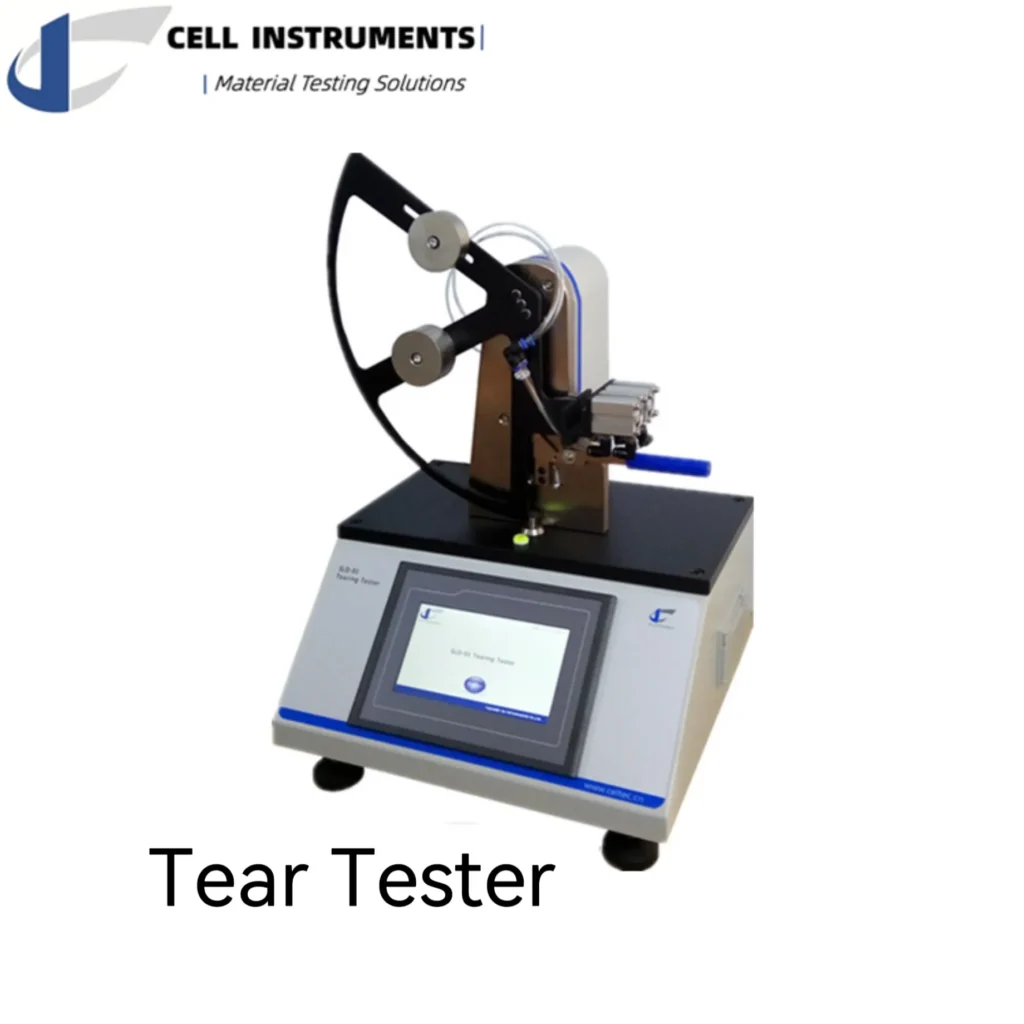Introduction
The Elmendorf tear tester is a widely used instrument for evaluating a material’s resistance to tearing—a key mechanical property in flexible packaging, paper, films, and textiles. Named after Armin Elmendorf, who standardized the pendulum-based tear method in the early 20th century, this test measures the force required to propagate a tear through a pre-cut specimen.
Tear resistance is critical for determining the durability and usability of packaging materials, especially in real-world conditions where nicks, punctures, or handling stress can initiate tear failures. As a trusted solution provider in packaging test equipment, Cell Instruments offers the SLD-01 Tear Tester, a modern Elmendorf-type instrument built to meet the demands of quality assurance professionals.
Standards and Test Methods
Elmendorf Tear Test Overview
The Elmendorf tear test quantifies the energy required to continue a tear in a sample once it has been initiated. It is a dynamic test method where a pendulum tears through a slit sample, and the energy lost in the pendulum’s motion is directly related to the tear strength of the material.
This method is governed by key standards, most notably ASTM D1922, which specifies procedures for plastic films and thin sheeting. Other relevant standards include ISO 6383-1 for films and TAPPI T414 for paper.
The SLD-01 Elmendorf tear tester supports all these testing methods with built-in presets and programmable settings for flexibility.
Tear Strength Measurement Across Industries
Tear strength measures the ability of materials to resist the spread of a tear under load. It is especially important in:
- Plastic films (PE, PET, PP): Used in flexible packaging, where resistance to mechanical damage is vital.
- Composite films and foils: Employed in multilayer medical or food packaging where both barrier and mechanical properties are critical.
- Paper and cardboard: For cartons, pouches, labels, and printed media that must remain intact during transit.
- Textiles and nonwovens: Used in medical applications, geotextiles, and apparel where fabric tearing impacts performance and safety.
The Elmendorf tear tester delivers consistent, high-precision tear resistance data that helps manufacturers choose optimal materials, adjust formulations, and meet performance specifications.
How the SLD-01 Tear Tester Works
The SLD-01 Tear Tester replicates the Elmendorf method using modern automation and control systems. Here’s a step-by-step breakdown:
- Sample Preparation: A precision knife creates a standard slit (typically 43 mm from the edge) in accordance with ASTM D1922.
- Pendulum Release: A pneumatically controlled latch releases the pendulum, which swings through the sample to propagate the tear.
- Energy Loss Measurement: The system records the loss in potential energy due to the tearing force and converts it into tear strength (in grams-force or mN).
- Result Calculation: The system automatically averages multiple test cycles, ensuring accurate and standardized results.
Technical Advantages of the SLD-01
Designed for accuracy, repeatability, and ease of use, the SLD-01 offers advanced features not found in manual tear testers:
- Industrial-Grade PLC + Touchscreen HMI: Smooth, intuitive interface with visual feedback
- Pneumatic Clamping: Uniform and consistent sample holding
- Auto Pendulum Release: Eliminates human variability
- Wide Force Range: Pendulum capacities from 200 gf to 6400 gf
- Auto Data Calculation: Mean, max, and min values with automatic statistical reporting
- Microprinter and RS232 : For seamless data traceability
- Paper-Specific Units: Optional tear index output for paper testing labs
- Software Integration: Optional PC software for data logging, analysis, and export
These features make the SLD-01 a reliable tool for laboratories that must meet strict material quality control and compliance requirements.
Best Practices for Performing an Elmendorf Test
To achieve consistent and accurate tear strength results, follow these testing best practices:
- Precondition your samples (usually 23°C, 50% RH) per standard protocol
- Use the correct slit length and specimen dimensions
- Choose the appropriate pendulum range based on material type
- Test multiple samples (typically 10+) to ensure statistical significance
- Recalibrate regularly using the included calibration weight
- Use pneumatic clamps to eliminate gripping variability

The SLD-01 simplifies these requirements with built-in presets and programmable control options.
Conclusion
The Elmendorf tear tester remains a fundamental instrument for assessing tear resistance in flexible films, papers, and textiles. As industries demand higher standards for packaging durability and regulatory compliance, accurate elmendorf tear test data becomes even more essential.
Backed by standards like ASTM D1922, and built for real-world reliability, Cell Instruments’ SLD-01 Tear Tester empowers professionals to conduct high-throughput, precision tear strength testing with confidence.
